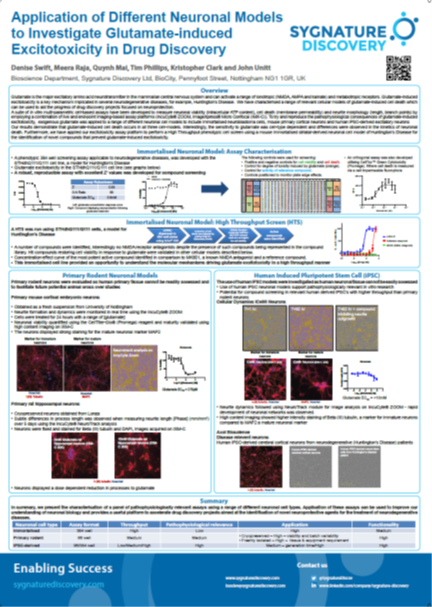Application of Different Neuronal Models to Investigate Glutamate-induced Excitotoxicity in Drug Discovery
Abstract
Glutamate is the major excitatory amino acid neurotransmitter in the mammalian central nervous system and can activate a range of ionotropic (NMDA, AMPA and kainate) and metabotropic receptors. Glutamate-induced excitotoxicity is a key mechanism implicated in several neurodegenerative diseases, for example, Huntington’s Disease. We have characterised a range of relevant cellular models of glutamate-induced cell death which can be used to aid the progress of drug discovery projects focused on neuroprotection.
A suite of in vitro multi-parametric cell-based assays have been developed to measure neuronal viability (intracellular ATP content), cell death (membrane permeability) and neurite morphology (length, branch points) by employing a combination of live and end-point imaging-based assay platforms (IncuCyte® ZOOM, ImageXpress® Micro Confocal (IMX-C)). To try and reproduce the pathophysiological consequences of glutamate-induced excitotoxicity, exogenous glutamate was applied to a range of different neuronal cell models to include immortalised neuroblastoma cells, mouse primary cortical neurons and human iPSC-derived excitatory neurons.
Our results demonstrate that glutamate-induced cell death occurs in all three cell-models. Interestingly, the sensitivity to glutamate was cell-type dependent and differences were observed in the kinetics of neuronal death. Furthermore, we have applied our excitotoxicity assay platform to perform a High Throughput phenotypic cell screen using a mouse immortalised striatal-derived neuronal cell model of Huntington’s Disease for the identification of novel compounds that prevent glutamate-induced excitotoxicity.

